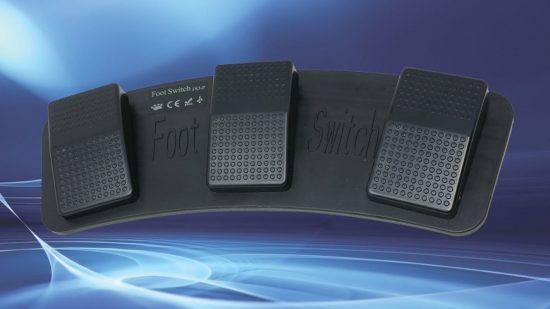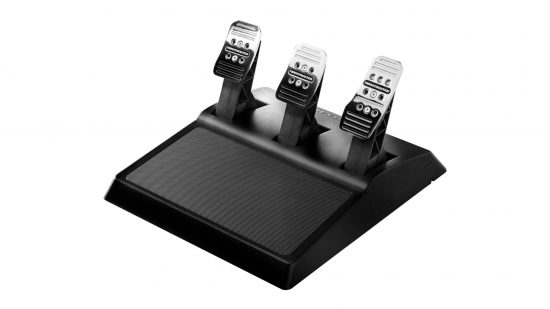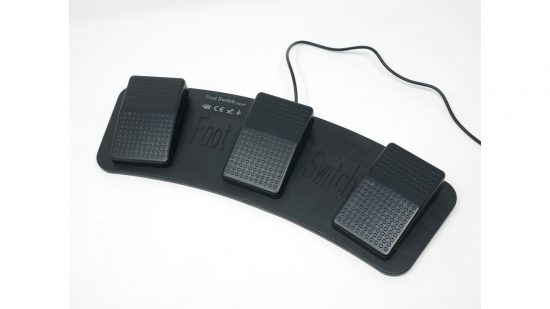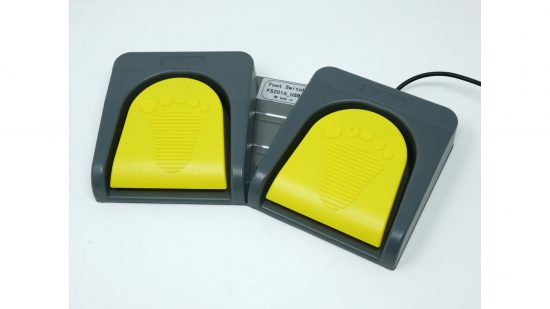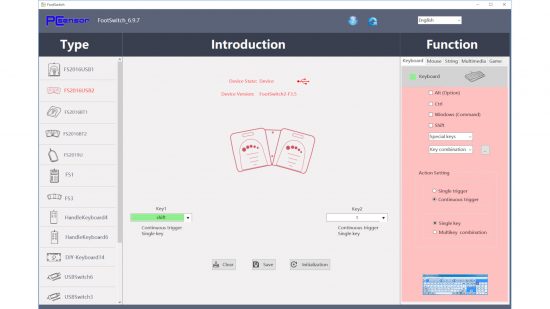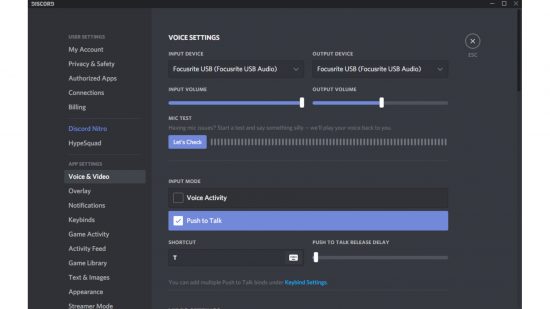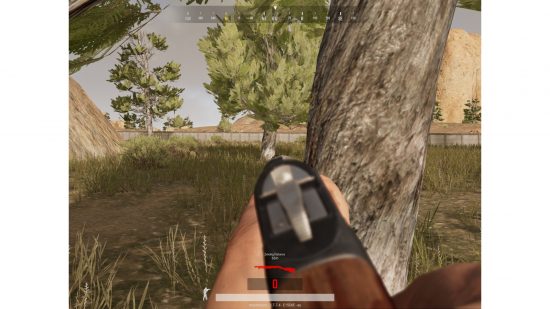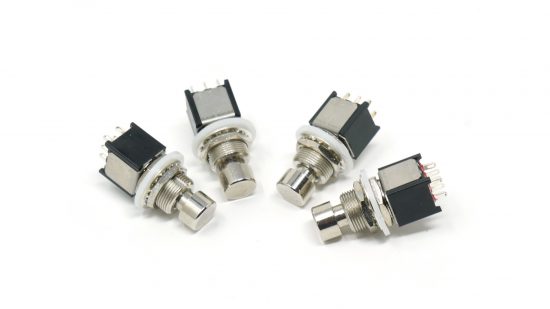We’ve long had accelerator and brake pedals for racing games, and rudder pedals for flight sims, but foot pedals have been sadly neglected in the wider gaming world.
While we’re all used to keyboards and mice festooned with extra buttons, we’ve been leaving a whole extra set of input devices idle – our feet. Are foot pedals the next revolution in the gaming peripheral world? We did a little digging to find out.
Why do I need a gaming pedal?
The idea and overall benefit of using your feet to add more control to your computer shouldn’t take much explaining: you can perform two or more functions with your feet, freeing up your hands and fingers for other tasks. Adding pedals to a racing or flight sim setup may make it feel more authentic, but more importantly, it just makes it easier to use.
Look outside the world of gaming and PCs, and we see this added utility used in all sorts of walks of life. There are sewing machine speed pedals, guitar effects pedals, the pedal keys of an organ, kick drum pedals – the list goes on and on. Heck, even some software comes with pedal control.
Perform a quick search online for PC foot pedals and one of the most common results is pedals designed specifically for use with dictation software. The question shouldn’t really be why do you need a gaming pedal, but why on earth do we not all already have them?
The list of possible uses is near endless. Even a single pedal that replicates a single key press could allow you to trigger push-to-talk on your favourite gaming chat app, or bring up your in-game inventory.
Double up on the number of pedals and you could offload the run and crouch keys or use them to lean left and right. Go all out and you could use multiple pedals to select weapons, fire off macros and much more, all without having to move your fingers from the most important keys and buttons on your keyboard and mouse.
Add analogue pedals into the mix and you have even more potential. Okay, so the uses here may be less game-orientated, but having a pedal that can adjust volume, scrolling speed/direction and so on could certainly be useful.
The options
Considering all this potential, you’d expect gaming peripheral companies to have long since cottoned on to this cash cow and milked it dry. However, not a single well-known peripheral company has got on board yet. It’s quite bizarre.
That said, there’s still a few options if you’re willing to take a punt on an unknown company. Search online for gaming foot pedals, and one of the first options you’ll see pop up is the Fragpedal, made by Good Work Systems. Built with gaming in mind, the Fragpedal is available in two-pedal or four-pedal versions and it certainly looks like it has potential. Unfortunately, we weren’t able to get hold of one for this feature, as the small US-based company doesn’t yet ship to the UK.
With that promising option a no-go, we found just two programmable USB foot pedals that appeared to be widely available round the world. Both appear to be made by a Chinese company called PCsensor (the software for configuring both pedals is made by this company), although they’re marketed under all sorts of different names depending on where you buy them.
The first is a 3-in-1 pedal board, which you can find sold under a range of strange brand names such as Sodial and Wscoficey on amazon.co.uk for just £20 (it’s listed as the FS3 in the PCsensor software). The second can also be found on amazon.co.uk, previously under the Docooler brand but now under the iKKEGOL brand, with the single-pedal version (FS2016USB1) costing £29 and the two-pedal version (FS2016USB2) costing £40.
Not really knowing what to expect, we ordered one each of all three variants. After a reliably short Amazon delivery time, all three pedal boards arrived unscathed – clearly, the products were stocked in the UK. A quick download of the configuration software from PCsensor.com and we were able to give the pedals a workout.
Straightaway, it was obvious that the yellow iKKEGOL boards were much more robust than the three-pedal Wscoficey one. They have thick metal bases that make the pedals both sturdy and weighty enough not to slide around the floor. The foot switches themselves are also large, heavily sprung and provide a clearly audible click when triggered.
In contrast, the Wscoficey pedals have a flimsy plastic base, and the pedals are small and much more lightly sprung. They also hinge from the front of the pedal, so it’s difficult to press the pedal with just the tip of your foot. This arrangement was annoying enough that we flipped the pedals around and used them with the USB cable directed towards us. The buttons also don’t provide any sort of audible or tactile feedback when they’re triggered.
Setting up both sets of pedals was really easy though. The software clearly lists all the products it supports down the left side, and it automatically shows which ones are plugged into your PC. Select the device, and you can assign to each pedal either a single key press, a mouse button click, a string of key presses, a multimedia key function or even emulate game controller buttons. You can also opt to have key presses trigger once or continuously.
Pedal to the metal
Having established that we much prefer the iKKEGOL pedals, we used them as our main test subject, to see just what the addition of pedals brings to our gaming. We tested them in three main configurations. The first was with the left pedal mapped to push-to-talk and the right pedal assigned to bring up the in-game map. In other words, we only used them for low-level, occasional functions. We tested this configuration across a number of games.
Next, our testing became a bit more game-specific, and we set up the pedals for use in Apex Legends. This game requires you to almost constantly hold down the left Shift key to ensure you’re always running, so we offset this one task to the left pedal, to see how well it held up to much more constant use. The right pedal was assigned to push-to-talk.
Finally, we configured the pedals for use in PlayerUnknown’s Battlegrounds, where we used them for leaning left and right. If you’ve ever played a first-person shooter that has leaning control, you’ll know it can be difficult to combine full WASD movement, running/walking/crouching control, mouse aiming and leaning. By offsetting the latter to the foot pedals, it should be much easier to get the other movements right.
Going back to our first scenario, the pedals easily proved their worth here. Simple, occasional inputs that are non-critical is where it’s easy to feel comfortable relying on cheap no-name foot pedals, and you don’t need particularly agile feet either.
However, it was immediately clear that having two separate pedals spaced further apart, where they sit more naturally under the feet, would be much more preferable to a single two-pedal board. Unfortunately, we weren’t able to get the PCSensor software to see two sets of the same style of pedals at once.
Meanwhile, the second scenario quickly demonstrated that the FS3 pedals weren’t up to the job, as the switches just didn’t seem to be as reliable when being held down constantly. The FS2016USB1 and FS2016USB2 held up well though.
You can just relax your foot on the pedal and basically never let it go – especially if you opt for the continuous trigger input, which will trigger the key press again, even if an element in the game forces you to stop running. The pedal seemed to hold up to the abuse of prolonged pressing and worked like a charm.
Finally, we come to the leaning challenge, which is where the whole world of foot-pedal use takes on another level of skill and learning – it was also where we most missed having two pedals more spaced out. Using both feet accurately and reliably, and coordinating them with keyboard and mouse movements, took some learning, and we certainly didn’t master it in the week or so we tested the pedals. However, we saw the potential. With the right hardware properly set up, a foot pedal setup seems like a natural progression in gaming controls.
Can I make my own?
As we’ve mentioned, none of the big-name brands has become involved in this potentially big market yet, which is perplexing. When we’ve seen such specialised, expensive gaming mice, keyboards, headsets, steering wheels and joysticks, it’s hard to imagine there isn’t enough of a niche market for foot pedals too.
Either way, though, that’s the situation right now. If the above couple of examples don’t take your fancy, can’t be found in your area, or you want a more sophisticated pedal setup, the only other option is to make your own.
We’re still working on our own DIY pedal board, so we don’t have a full build guide, but the theory is quite simple. Grab a handful of momentary switches, or premade pedals, mount them on a board, wire them to an Arduino or similar programmable interface and write a short bit of code that maps each button press to a keyboard function.
If it’s done correctly, you shouldn’t need any extra power, and you could just run the board from the Arduino’s USB power source. We managed to grab four momentary switches, an Arduino and a slab of plywood all for under £40.
If you’ve ever experimented with foot pedals for gaming – or if you’ve made your own foot pedals – get in touch and let us know how you got on. As for the rest of us, maybe it’s time we all started spreading the word and badgering our favourite PC peripheral companies to start investing in controllers that allow us to make the most of all our limbs.
